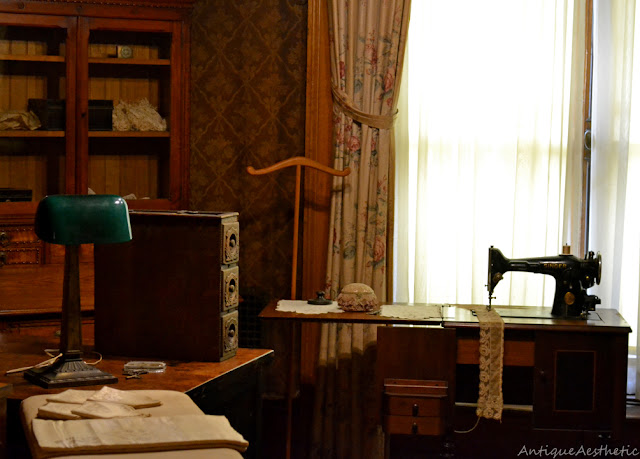As someone who is trying to live a vintage style life, I like to incorporate vintage items into my life whenever I can. I love to collect vintage and antique makeup products and compacts, but I know better than to actually use these products. Not only have they been used and are incredibly expired, but who knows what sort of ingredients were considered 'safe' back when these products were first created. That being said, I also hate to remove the old makeup when it's in fairly good condition, not just for value's sake, but also to be able to see the original colors that were used at the time. However, I don't feel so bad about restoring items that are either in pretty rough shape already, have a cheap price tag, or even better, are lacking their original makeup which is what drives up their value. I was lucky enough to come across the most perfect item to start me on this mission - an empty 1920s Djer-Kiss rouge compact.
Djer-Kiss(pronounced 'deer-kiss') was a perfume company that delved into cosmetics(as many companies did when makeup became socially acceptable), running from around 1903 until the 1960s. They are famously known for their 'Kissing Fairies' line, including a very Art Nouveau style compact that is quite valuable.
I certainly don't have the deep pockets for such a beautiful piece, and I definitely wouldn't want to ruin its value by restoring it either!
The idea for this restoration was sort of an accident. I had bought a talc-free Physician's Formula blush a while ago which had sadly been moved around too many times and the powder inside just crumbled to pieces.
My poor destroyed Physician's Formula blush in 'Natural'.
It has drifted around my home while I tried to figure out what to do with it, until I thought it's in the perfect state to be put into a different case. I tossed around the idea of just finding a photograph of an old rouge label and putting that on a new container, since most old compacts are too expensive to be messed with. In my research for simply a picture I found this compact. It's like it was meant to be - cheap, antique, without any makeup - just waiting for me to bring it back to life.
Condition of compact upon purchase. Wear scratches on the outside, sticker on bottom still intact, some powder floating around the inside, mirror complete, overall great shape for a makeup item from the 1920s!
The Supplies:
First I cleaned the compact with q-tips and a little water, being thorough but not too harsh, and making absolutely sure not to get any water in the space behind the mirror. This can loosen the glue and make the mirror shift, which can ultimately lead to breakage.
All cleaned up!
I then took the powder and mixed it with just enough isopropyl alcohol to make a slightly wetter toothpaste consistency(this is a common method of re-pressing powder cosmetics, and there are endless tutorials online. Note that the texture may change a bit, but seeing as this is blush and not eyeshadow where the texture is everything, I'm not too concerned*).
Before the alcohol.
After adding the alcohol.
This paste I carefully put into the compact; a spoon was perfect for this job.
I was surprised to find that all the powder fit inside this tiny compact, the difference in size can be seen in the photograph. Just goes to show how much unnecessary packaging is used in cosmetics these days!
Once the blush-paste was put inside the compact, I simply cleaned up the edges and let it sit out to dry for a few days.
Not the prettiest, but it'll work!
And here it is! My very own 1920s blush, as if I stepped back in time and bought it from the local department store.
*The texture did change, it's harder than it was previously but not unusable. I would, and may, do this again.
For more information on Djer-Kiss company and products:
The History of Djer-Kiss































































